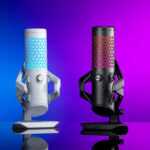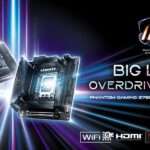The new lineup of the ASUS Zenpad 3 8.0 [Z581KL] sports a mid-range Qualcomm Snapdragon 650 MSM8956 64bits Architecture Hexa-Core 28nm HPm 1.8Ghz [2x ARM Cortex A72 & 4x ARM Cortex A53] processor and a Adreno 510 Graphics processor packed into system on the chip [SoC]. It also comes with dual channel 4GB of Low-power LPDDR3 RAM. The phone packs with embedded Multi-Media Controller [eMMC] package 32GB of internal storage that can be expanded up to 128MB via a microSD card. If you’re looking for an affordable tablet with the latest hardware and better-than-average sound, ASUS Zenpad 3 8.0. $499 suggested retail price.

The Zenpad 3 8.0 comes with 8-megapixel primary camera on the rear and a 2-megapixel front shooter for selfies. The operating system [OS] runs Android 6.0.1 Marshmallow 64bits and is powered by a 4650mAh non removable battery. It also comes with a Micro-SIM [LTE] and a microSD card slot.
Connectivity & Ports

The connectivity options include Wi-Fi MIMO 802.11AC, AGPS and Bluetooth 4.1. Sensors on the Tablet include Proximity sensor, Ambient light sensor, Accelerometer.
The USB Type C port: The Type C based on the USB 2.0 standard and this is the down side of this tablet, it’s doesn’t support Qualcomm Quick Charge 3.0 and only support Fast Charging. Also, no fingerprint scanner on the tablet. The headphone jack support DTS Headphone X delivers an immersive, cinematic 7.1-channel surround sound experience straight to your headphones.

You can use the Type C port to charge another device by plugging in the cable and select “Power supply” mode.

Hardware Specification
|
OS |
Android 6.0 Marshmallow with ZenUI 3.0 |
|
Display |
8-inch LED Backlight IPS panel; 2048×1536 (QXGA) 10-point multi-touch support; ASUS TruVivid panel-construction technology ASUS Tru2Life+ video-enhancement technology |
|
CPU |
Qualcomm Snapdragon 650, Dual A72 1.8GHz + Quad A53 1.4GHz |
|
Memory |
4GB |
|
Storage |
32GB eMMC |
|
Graphics |
Andreno 510 |
|
Wireless Data Network |
WLAN 802.11ac/a/b/g/n, dual band 2.4GHz/5GHz Bluetooth V 4.1 (EDR + A2DP) Miracast support |
|
Cameras |
2MP front camera (720p video recording) 8MP rear camera (1080p video recording) |
|
Audio |
Dual front stereo speakers DTS Headphone:X 7.1 support |
|
Interface |
1 ×USB-C 1 × 2-in-1 Audio Jack (Headphone / mic-in) 1 × Micro SD Card Reader, up to 128GB (SDXC) |
|
Sensors |
G-Sensor/ E-compass / Gyroscope / Ambient Light Sensor / Hall Sensor / Proximity Sensor |
|
Battery |
18Wh 4650mAh Li-polymer |
|
Navigation |
GPS & GLONASS |
|
Color |
Black |
|
Dimensions |
136.4 x 205.4 x 7.57 mm |
|
Weight |
320g |
|
Warranty |
1 Year Local Warranty |
Processor: Snapdragon 650 with Adreno 510 GPU

| Model number | Semiconductor technology | CPU instruction set | CPU | GPU | DSP | Memory technology |
| Snapdragon 650 | 28 nm | ARMv8 | 6 Cores – 2x Cortex-A72 & 4x Cortex A53 up to 1.8 GHz 64bits | Adreno 510 64bits | Hexagon V56 | Dual Channel LPDDR3 933Mhz |
The Snapdragon 650 chipset was built on a power-efficient 28nm HPm process, this allows its two ARM Cortex A72 & four ARM Cortex A53 cores to be clocked at 1.8GHz and the graphics processor powered by Adreno 510. This is the third 600-class chip to record 4K UHD video (with supports both AVC and HEVC codecs); it also supports up to 21MP cameras with its dual ISP. It’s paired with an X8 modem for Cat. 7 LTE – up to 300Mbps downloads and 100Mbps uploads. The chipset also supports Wi-Fi 802.11ac. The Snapdragon 650, previously known as 618, features a hexa-core processor (2x 1.8GHz Cortex-A72 and 4x 1.2GHz Cortex-A53), while the Snadragon 652, previously known as Snapdragon 620) has an octa-core CPU (4x 1.8GHz Cortex-A72 and 4x 1.2GHz Cortex-A53). Both chip come with a new Adreno 510 GPU supporting Quad HD screens, 4K video recording support and LTE Cat.7 connectivity.
The Snapdragon 650 processor offers many advantages: The processor integrates superior user experiences for high-tier mobile devices, while maintaining industry-leading battery performance.
-Integrated X8 LTE
• LTE Advanced Carrier Aggregation up to 2×20 MHz in the downlink and uplink
• Support for 64-QAM in the uplink
• Up to 300 Mbps (LTE Cat 7) speeds in the downlink, and up to 100 Mbps uplink
• Support for Snapdragon All Mode, including LTE-FDD, LTE-TDD, CDMA, UMTS/HSPA+ and TD-SDCMA
– Quad HD (2K) displays and wireless streaming full HD
– Qualcomm® Hexagon™ V56 DSP provides battery-efficient enhancements to audio, video, and computer vision use cases
– Next generation Qualcomm® Adreno™ 510 GPU makes high-tier graphics and gaming more immersive than ever
– Tight system integration and optimization for superior performance and power efficiency
Build and Design
The Zenpad 3 8.0 is a 8-inch display (8-inch class) that weighs about 320g. It’s feels comfortable in the hand, and like the Hairline Finish design. It has a premium leather-patterned backing combined with nicely curved edges to give it a good solid grip. The design is trimmed with an attractively-understated silver stripe.

Display
The panel’s native resolution is 2048 x 1536 with a hardware refresh rate of 30Hz. The IPS display features a wide 178-degree viewing angles.
Splendid feature: Blue light filter
ASUS researchers have been hard at work trying to determine the right amount of blue light reduction for various tasks, especially for us PC, laptops and smartphone users, as we often use our devices under dark lighting conditions, intensifying the effects of blue light on our eyes. And they came up with Reading Mode, now called Blue-light Filter, and added it to their existing Splendid display enhancement technology.

Blue-light filter features a slider bar with four levels of blue-light reduction.
1. The first level gives you approximately 20% reduction, ideal for normal web browsing, while, with minimal color shift, still giving you excellent color reproduction for lifelike visuals.
2. The second level gives you approximately 30% reduction, good for viewing photos and videos.
3. The third level gives you about 50% blue light reduction, imitating the ideal look of book paper. This mode is ideal for ebook reading and word processing.
4. The fourth level gives you about 70% reduced blue light, perfect for dim ambient light environments.

The cornea, situated at the front of the eye, is a transparent cover that protects your iris, pupil, and anterior chamber. Light passes through the cornea and pupil before the crystalline lens focuses it on the retina.
High-energy blue-violet light in the narrow 415nm (violet) to 455nm (blue) is particularly damaging to eyes, in particular the lens and retina. The blue band of the light spectrum yields more energy and can pass straight through your eye – resulting in myopia (near-sightedness) and macular degeneration.
Blue light from monitors may cause eye damage, strains, headaches, and sleep disorders. Children are more susceptible to eye damage because their crystalline lens is less effective in filtering out blue-light, adding to the risk of age-related macular degeneration.
I find it one of the most attractive tablet on the market.
Audio: Dual Speaker with DTS HD, and DTS headphone:X Virtual 7.1 surround built-in for headset support.
![]()
The Dual speakers and DTS HD that provides clear, defined sound and users can enjoy surround-sound movie soundtracks.


If you have a high definition Bluetooth “aptX” headset and you will be able to enjoy on the Zenpad 3. Qualcomm aptX make use of the Bluetooth connection data pipeline to transmit bits of data between devices and the pipeline has a maximum width, it can flow large audio files to the device. AptX also solves the problem of sending pure audio wirelessly over Bluetooth by reducing the size of the audio files so they can be squeezed through the wireless pipeline without affecting the sound quality.
AptX supports music resolutions of up to 24-bit/96kHz which is actually better than the quality of audio stored on CDs which is 16-bit/44.1kHz.
Camera
The main camera of the ZenPad 3 8.0 has an 8-megapixel with an autofocus as well as an aperture of f/2.0.
There is no manual functions.
The ZenPad 3 seem like pack with a lite version of PixelMaster and it packed with 17 rich features:

- Auto – Automatically sets the camera’s best settings depending on the environment.
- HDR – Expands the dynamic range and enhance detail from high-contrast.
- Beautification – Applies multiple facial enhancements.
- Low Light – Adjust the sensor sensitivity for a cleaner and brighter low-light photo.
- QR Code – Scan QR code content information.
- Night – Adjust slower shutter speed to capture more light during night scenes.
- Depth of Field – Captures photo of close-up subjects with a soft background.
- Effect – Provides various filter effects.
- Selfie – Capture high-resolution selfie image using front camera
- GIF Animation – Capture a series of images and convert them into GIF format.
- Panorama – Grabs a wide panoramic view of your surroundings.
- Miniature – Captures a photo of life-size objects and turns it into a small scale model.
- Time Rewind – Automatically recording images before and after.
- Smart Remove – Removes unwanted moving objects from the background.
- All Smiles – Combines each expression from multiple shots into a photo
- Slow motion – Records fast-moving object with very high frame rate.
- Time Lapse – Records the video in a slower pace
Night shooting
The camera performs poorly at night and some photo is blurry due to the limitation of the camera.
Auto mode: 8-Megapixel, f/2.0, ISO 200, Exposure 1/24

HDR mode: 8-Megapixel, f/2.0, ISO 296, Exposure 1/24

Low Light mode: 2-Megaepixel f/2.0, ISO 146, Exposure 1/40

Night mode: 8-Megapixel, f/2.0, ISO 164, Exposure 1/30

Auto mode: 8-Megapixel, f/2.0, ISO 526, Exposure 1/15

HDR mode: 8-Megapixel, f/2.0, ISO 526, Exposure 1/76923

Low Light mode: 2-Megaepixel f/2.0, ISO 363, Exposure 1/17

Night mode: 8-Megapixel, f/2.0, ISO 579, Exposure 1/15

Auto mode: 8-Megapixel, f/2.0, ISO 784, Exposure 1/12

HDR mode: 8-Megapixel, f/2.0, ISO 1419, Exposure 1/12

Night mode: 8-Megapixel, f/2.0, ISO 1600, Exposure 1/8

Auto mode: 8-Megapixel, f/2.0, ISO 50, Exposure 1/4854

HDR mode: 8-Megapixel, f/2.0, ISO 52, Exposure 1/4082

Auto mode: 8-Megapixel, f/2.0, ISO 51, Exposure 1/3367

HDR mode: 8-Megapixel, f/2.0, ISO 51, Exposure 1/3367

[Video stabilization unable to enable when recording in Full HD and only can enable in HD mode.]
Slow Motion: Full HD [1920 x 1080], video stabilization: disable
[evp_embed_video url=”http://asuswrt.net/Video/Zenpad%203/Slow%20motion.mp4″]
Normal: Full HD [1920 x 1080], video stabilization: disable
[evp_embed_video url=”http://asuswrt.net/Video/Zenpad%203/Normal.mp4″]
Normal: HD [1280 x 720], video stabilization: enable
[evp_embed_video url=”http://asuswrt.net/Video/Zenpad%203/HD%20with%20stabilization%20enable”]
Normal: Full HD [1920 x 1080], video stabilization: disable
[evp_embed_video url=”http://asuswrt.net/Video/Zenpad%203/FHD%20disable%20stabilization.mp4″]
Let’s have a look at how the two tablets perform.
| Model | Zenpad 3 [Z581KL] |
MeMO Pad 8 [ME581CL] |
| Display | 8 inch | 8 inch |
| Resolution | 2048 x 1536 QXGA | 1920 x 1200 FHD |
| Processor | Snapdragon 650 – 64Bits | Intel Atom Z3560 – 64Bits |
| Clock speed | 400Mhz – 1800Mhz | 500Mhz – 1830Mhz |
| Cores | 6 Cores | 4 Cores |
| Graphics | Snapdragon Adreno 510 | PowerVR G6430 |
| RAM | DDR3L – 4GB | DDR3L – 2GB |
| Memory | 32GB | 16GB |
| Android
Firmware |
6.0.1
3.3.18 |
5.0.1
12.14.2.26 |
PCMark for Android
PCMark for Android introduces a fresh approach to benchmarking smartphones and tablets. It measures the performance and battery life of the device as a complete unit rather than a set of isolated components. And its tests are based on common, everyday tasks instead of abstract algorithms.








AnTuTu Bechmark
AnTuTu Benchmark is a comprehensive Android Benchmarking application. It includes “Memory Performance”, “CPU Integer Performance”, “CPU Floating Point Performance”, “2D 3D Graphics Performance”, “SD card read-write speed”, “Database IO” performance testing.

AS SD Benchmark
Use A1 SD Benchmark your phone & tablet SD card, RAM and memory, to test IO read / write speed (Quick, Long, Random I/O and Accurate) and check media performance.


Vellamo Benchmark
Vellamo is designed to be an accurate, easy-to-use suite of system-level benchmarks for devices based on Android 4.0 forward. In Vellamo we want to enable performance enthusiasts to really understand their system, and how it compares to other systems, and our mission has just begun. Vellamo began as a mobile web benchmarking tool that today has expanded to include three primary Chapters. The Browser Chapter evaluates mobile web browser performance, the Multicore Chapter measures the synergy of multiple CPU cores, and the Metal Chapter measures the single core CPU subsystem performance of mobile processors.

GeekBench
Geekbench 4 includes updated CPU tests that model real-world tasks and applications. These tests are designed to quickly and accurately measure mobile CPU performance. Every Geekbench 4 CPU test is multi-core aware, allowing Geekbench 4 to measure the full potential of your device’s CPU.







